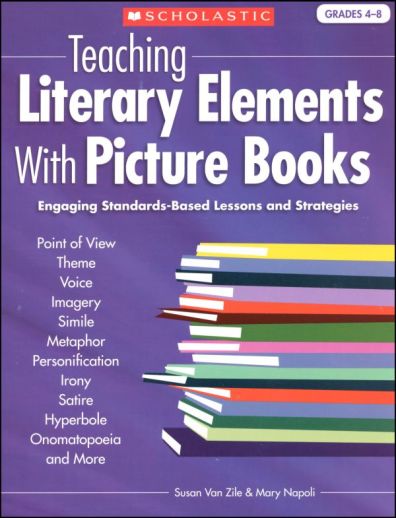We use cookies to make your experience better. To comply with the new e-Privacy directive, we need to ask for your consent to set the cookies. Learn more.
Teaching Literary Elements With Picture Books
From the same publisher and series as Teaching Literary Elements with Chapter Books, students can learn literary elements using picture books. You usually don't find short, illustrated picture books being used at the middle school level, but they are something familiar to students from their childhood and can be used effectively. Students will learn about point of view, theme, voice, imagery, simile, metaphor, personification, irony, satire, hyperbole, onomatopoeia, idiom, parody, word choice, and style and be introduced to methods and ideas for transferring writing skills and literary devices from literature to their writing. There are 15 lessons in this book, and each begins by identifying a literary device, its definition, and an example. Selected literature for that particular element is listed along with 2 additional selections for the purpose of expanding on the element. A materials and reproducibles list for each lesson is printed on the first page of each lesson and 'before, during, and after' reading strategies are offered. A writing activity and lesson extensions are given in each lesson and may include writing ideas for the alternative literature selections or options for crossing over to other content areas. Reproducible forms and organizers are found in the back of the book. The picture books utilized in the book are from 2000 to 2007 and include titles like Elephant Dance to illustrate simile, The School is not White for the subject of theme, and Scoop for the device of voice. This 80-page book offers an alternative way of teaching, and allows students to connect with familiar books while learning the literary elements.
| Product Format: | Softcover Book |
|---|---|
| Brand: | Scholastic Teaching Resources |
| Grades: | 4-8 |
| ISBN: | 9780439027991 |
| Length in Inches: | 10.6 |
| Width in Inches: | 8.2 |
| Height in Inches: | 0.3 |
| Weight in Pounds: | 0.42 |

